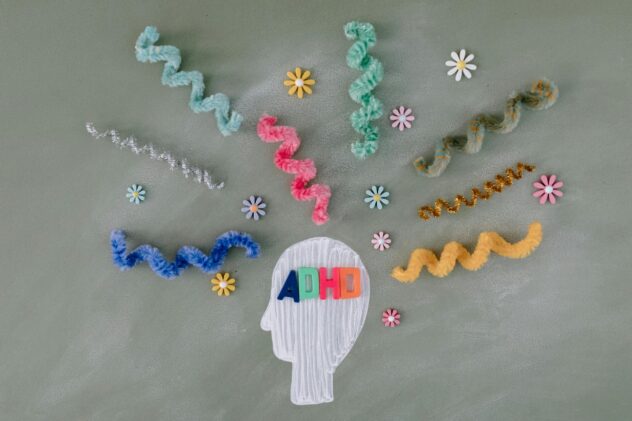
Okay, grab your favourite herbal tea, because I’m about to introduce you to someone who’s completely revolutionised how I look at mindfulness, movement, and, let’s be honest, how to keep your brain from exploding after a whole day of chaos. Meet Alex. Now, Alex isn’t your average “zen” guru. He’s no monk (thankfully, because that would be way too much quiet for me). But, what Alex has done is find an incredible way to get his ADHD in check through a combination of movement for focus and mindfulness, two things that don’t usually get much love when it comes to managing ADHD.
When Alex first told me about his journey, I’ll admit, I wasn’t sold. I mean, you hear “mindful movement,” and the first thing you think is probably “yoga,” right? And if you’ve got ADHD, yoga can feel like it’s about as exciting as watching paint dry. But here’s the twist: Alex has managed to combine the idea of mindfulness with the freedom of movement, and somehow, it works like magic.
Now, instead of constantly battling his mind to focus (which we all know is like trying to hold water in your hands), Alex found a way to calm the mental chatter by getting into the rhythm of his body. And let me tell you, I’m fascinated by it.
Unlock peak brain performance with science-backed biohacks. Join free now & get your guide for just £4.99 (45% off)!

Why Alex Is Obsessed with Mindful Movement for ADHD
So, why does this work for Alex? Well, it turns out that for people like Alex, a typical Aussie who experiences the whirling thoughts of ADHD, sitting still and meditating can sometimes be more of a curse than a cure. His mind doesn’t just wander, it’s off in another galaxy. But once he started integrating movement into his mindfulness practice, things started clicking. And when I say “clicking,” I mean, we went from hearing Alex talk about his “chaotic brain” to hearing about his “calm mornings”, a big shift.
Mindful movement isn’t about trying to clear your head completely (because let’s be real, for anyone with ADHD, that’s like trying to bottle a tornado). It’s more about tuning into the rhythm of the body, getting out of your head for a bit, and letting the physical movement calm the storm inside.
What Exactly Is Mindful Movement, Anyway?
Okay, I know what you’re thinking: “What in the world is mindful movement?” Fair question. It’s exactly what it sounds like: being present while moving. Now, don’t roll your eyes and hear me out. It’s not about jogging in place while worrying about dinner. It’s about paying attention to your breath, your body’s movements, and being totally present as you move through space. It could be walking, yoga, Tai Chi, or even stretching; anything that gets you moving, but with awareness.
For Alex, it started with a bit of stretching and some gentle yoga. No high-intensity, sweat-dripping workout here, just some simple moves to help his body relax and focus. And the difference it made for him? Night and day.
How Alex Found His Flow – Mindful Movement Styles That Actually Work
- Mindful Walking: The Surprisingly Powerful ADHD Hack
When Alex first told me he was doing mindful walking, I thought, “Oh boy, here we go, he’s off on a new wellness trend.” But, honestly, I was wrong. Mindful walking is brilliant. Alex would take a walk around the park, but instead of zoning out, he’d focus on the feel of his feet hitting the ground, the rhythm of his breathing, and the sights around him. And bam, he’d return to work with clearer thoughts and a calmer mind. Simple, effective, and doesn’t require a yoga mat! - Yoga: Not Just for the Flexible Yummy Mummies in Lululemon Pants
Okay, yoga might sound like a stretch (pun intended), but Alex swears by it. No need to be a contortionist, just focusing on breathing and stretching in simple poses has worked wonders. The first time Alex tried yoga, he ended up flat on his back, laughing. But now? He starts his day with a few basic stretches, calming his nerves and setting a grounded tone for the rest of the day. It’s like hitting the “reset” button for his mind. (He’s even got me trying it now, though I’m definitely not flexible.) - Tai Chi: Slow Down and Stay Focused
Now, if yoga sounds too “active” for your taste, Tai Chi might be more up your alley. This slow, flowing movement style has worked wonders for Alex. It’s the opposite of fast-paced cardio and requires complete attention to your breath and body. Alex says Tai Chi helped him reconnect with his physical self in a way he never thought possible. Studies have even shown that it helps reduce ADHD symptoms, and it’s pretty safe to say Alex is living proof. - Breath-Focused Stretching: Easy Does It
This is the perfect low-effort way to engage in mindful movement. Alex swears by a few minutes of stretching in the morning to get his body and mind aligned. It’s not about pushing your limits; it’s about stretching, breathing, and staying aware of your body. He’s found that a gentle stretch every morning keeps his mind sharp without overwhelming him.
How to Make Mindfulness for Focus and Movement a Habit
Let’s be real, starting a new habit is hard, especially when you’ve got ADHD. But Alex found a way to make mindful movement part of his daily routine without making it feel like a chore.
Here’s how you can start:
- Start Small: Begin with 5 minutes of mindfulness for focus every day. Maybe it’s a short walk or a few stretches in the morning.
- Consistency Is Key: Try to make it part of your routine. Whether it’s after lunch or before bed, just make sure it’s a regular habit.
- Listen to Your Body: Don’t push yourself too hard. If yoga doesn’t feel right for you, try Tai Chi or just a few minutes of mindful walking.
Why Mindful Movement Works for ADHD
The science behind why this works is fascinating. It all comes down to how movement and mindfulness work together to help calm the brain, regulate emotions, and improve focus. Research shows that mindfulness practices, combined with physical movement, can enhance cognitive function, reduce anxiety, and improve attention, everything that ADHDers need.
Studies have shown that mindfulness can even change brain structure in ways that improve focus and self-regulation. That’s why Alex was able to get his ADHD under control by incorporating mindful movement into his routine. It wasn’t a magic fix, but it was a game-changer.
Other Therapies to Boost Focus
While mindfulness is a powerful tool, it’s not the only one. There are plenty of other alternative therapies you can try to help manage focus. Some of the most effective ones for neurodivergent folks include:
- Hypnosis: Believe it or not, hypnosis can be a surprisingly effective tool for focus and mental clarity. By guiding your subconscious, hypnosis can help you reframe negative thoughts and improve concentration.
- Acupuncture: This ancient practice helps balance your body’s energy and has been shown to support focus and reduce stress—two things that are often a struggle for those with ADHD or autism.
- CBT (Cognitive Behavioural Therapy) and DBT (Dialectical Behaviour Therapy): Both of these therapies are excellent for helping you manage emotional responses, stress, and anxiety, which in turn improves focus. Plus, they can help address the mental clutter that gets in the way of staying on task.
- Traditional Therapy: And of course, there’s always good old-fashioned therapy. Whether it’s talking through challenges with a therapist or working through coping strategies, therapy has its place in the wellness toolkit.
Bringing It All Together: Mindful Movement Is the Secret Ingredient
Alex’s story is a powerful reminder that managing ADHD doesn’t have to be a battle. By combining movement and mindfulness, Alex has found a natural way to reclaim his focus and mental clarity. So, if you’re struggling to focus or manage stress, give mindful movement a go. Whether it’s a walk, a stretch, or a full-on yoga session, the key is to stay present and enjoy the rhythm of your body.
So, don’t just sit there thinking about it, take a walk, do a stretch, and see how it feels. Take mindfullness for focus into your daily movement. Your mind and body will thank you.






